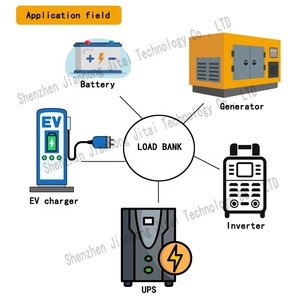Introduction to Electrical Load Banks
Electrical load banks are indispensable tools used in the testing and maintenance of power generation systems. They simulate the electrical load that a generator or power source would encounter in real-world applications, ensuring optimal performance and reliability. Load banks play a crucial role in a variety of sectors, from power plants and manufacturing to data centers and telecommunications. The ability to test equipment under different load conditions helps identify potential issues and prolongs the lifespan of electrical systems.
Types of Electrical Load Banks
Electrical load banks come in various types, each designed for specific applications. Understanding these types is crucial for selecting the right load bank for your needs.
- Resistive Load Banks: These load banks simulate steady-state electrical loads, typically used for testing generators during commissioning and routine maintenance. They convert electrical energy into heat, making them simple and widely used.
- Reactive Load Banks: Used to test power factor under varying load conditions, these load banks create inductive and capacitive loads. They are essential for ensuring generator performance aligns with power quality standards.
- Combined Load Banks: These offer both resistive and reactive loads, making them versatile for comprehensive testing. They are ideal for applications requiring extensive testing across multiple load types.
- Portable Load Banks: Designed for mobility, these are easy to transport and set up. They are particularly useful in field testing scenarios or temporary power generation setups.
Applications of Electrical Load Banks
The applications of electrical load banks span across multiple industries, demonstrating their flexibility and importance in various settings.
- Power Generation Testing: Load banks are frequently used to validate the performance of generators, ensuring they can handle loads efficiently and reliably.
- Data Centers: They are essential for testing backup generators, helping to ensure that data centers maintain uptime during power interruptions.
- Telecommunications: Load banks support the testing of backup power systems to maintain communication integrity during outages.
- Training and Simulation: Load banks are used for educational purposes in engineering fields, allowing students to understand load balancing and power distribution.
Features and Advantages of Electrical Load Banks
Understanding the features and advantages of electrical load banks helps in realizing their value and efficiency in power management.
- Durability: Constructed from high-quality materials, load banks are designed to withstand harsh environments, making them reliable for long-term use.
- Customizability: Many load banks can be tailored to specific testing needs, allowing for various configurations to suit different operational requirements.
- Remote Operation: Advanced models come equipped with remote monitoring and control capabilities, enhancing user convenience and allowing for easier integration with existing systems.
- Simplified Maintenance: Load banks are designed for ease of use and maintenance. Access panels and design features allow for quick inspections and repairs, minimizing downtime.





















